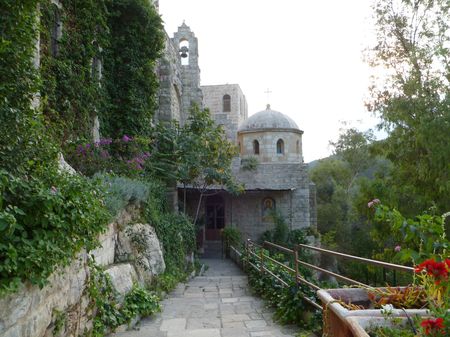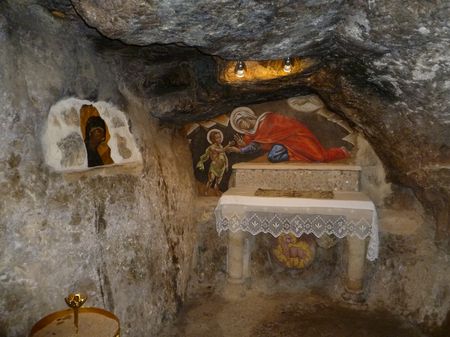St. John in the Desert

Tradition identifies the deserted place where John grew up as the hermitage of St. John in the Desert, also known as 'Ain el-Habis (spring of the hermit.) The site is located in the heart of the Judean hills, about 3 km from Ein Karem, St. John’s birthplace, which is itself just 7-8 km west of Jerusalem.
Just as Jesus went into the wilderness before beginning his ministry, so did John before him. It is in the desert that the people of Israel encountered God as they journeyed from Egypt towards the Promised Land. The prophet Isaiah also declared that future salvation would be announced by the “voice of one crying out in the wilderness" (Isa 40:3-4, Luke 3:2-4).
But the irony is that St. John in the Desert really looks more like a lush oasis than a sandy desert. The unassuming yet charming monastery is surrounded by green trees and vegetation, and a fresh water spring fills a pool that is the home of many large bright red fish.

From the hermitage, a short hike up the hill leads to a convent that claims to be the burial place of John’s mother Elisabeth.
The current monastery, which the Franciscans purchased from the Latin Patriarchate in 1911, is built above Byzantine ruins and the remains of a Crusader church and convent. In the 1990s, a community of Melkite Catholics cared for the site, and they left a number of beautiful frescoes on the inner walls of the monastery.
Today, the monastery of St. John in the Desert welcomes many pilgrims throughout the year. It is known as a place of interconfessional friendship, since it receives large numbers of Orthodox Christians and also enjoys very good relations with its Israeli and Jewish neighbors.
